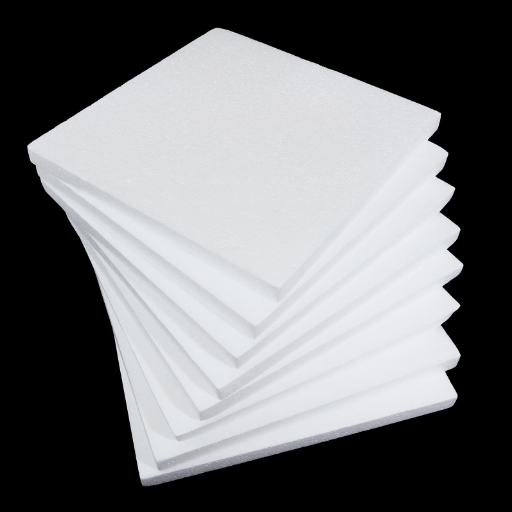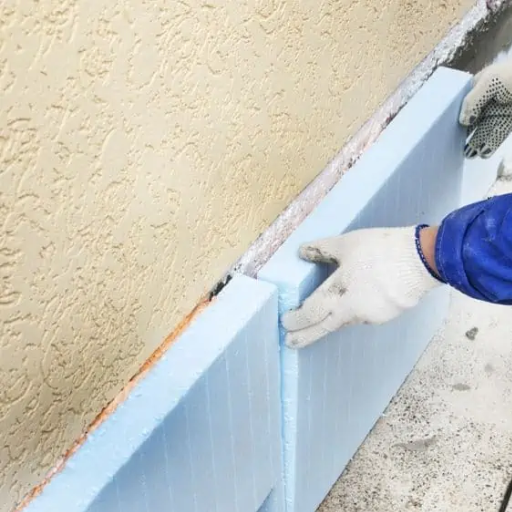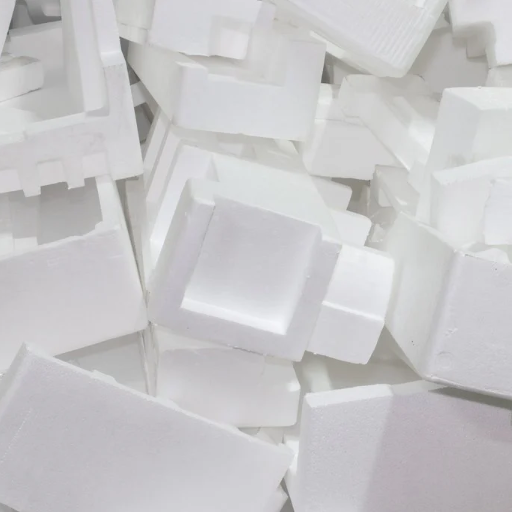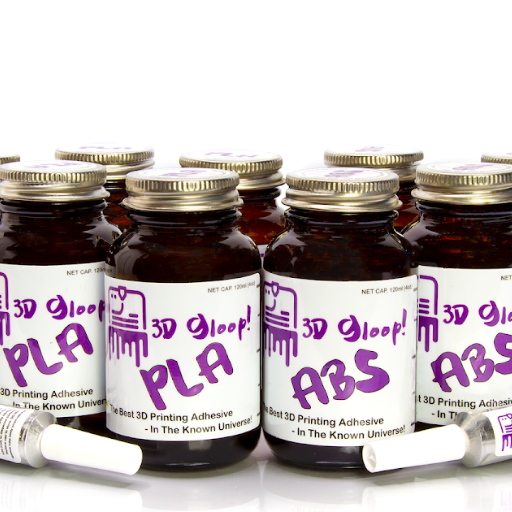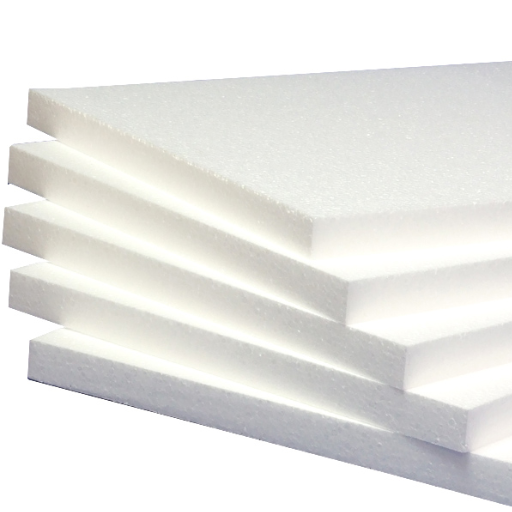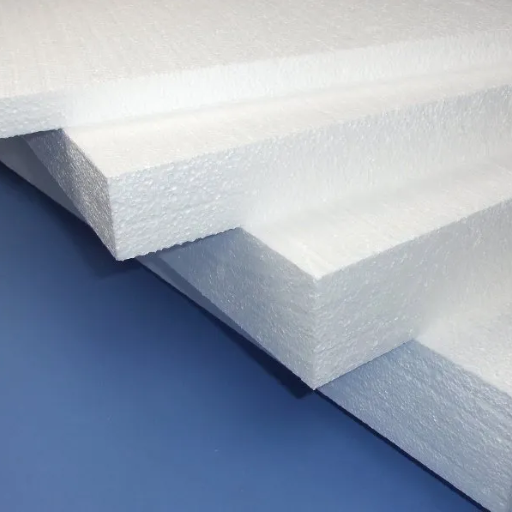Selecting an appropriate superglue for your DIY projects is essential since the longevity and quality of your work rely greatly on the effectiveness of the adhesive used. Between Loctite, Krazy Glue, and Gorilla Glue, they have developed a loyal customer base due to their particular strengths and unique performance characteristics. In this post, we summarize a comparison of these three adhesives based on bonding strength and versatility, drying times, materials compatibility, and ideal applications. From constructing detailed crafts and fixing broken household items to completing heavy-duty repairs, this guide aims to help you make an informed decision according to your project’s specific needs.
What are the Differences Between Loctite, Krazy Glue, and Gorilla Glue?

Bonding Strength and Versatility
Loctite is renowned for its industrial-grade bonding strength, making it ideal for tasks requiring a durable and long-lasting hold. It excels in bonding materials like metal, plastic, and rubber. Krazy Glue, while versatile, is best suited for lightweight applications and smaller repairs, as its strength is optimized for quick fixes rather than heavy-duty projects. Gorilla Glue, on the other hand, is designed to handle both light and heavy projects, with its strong, water-resistant hold that works well on diverse surfaces including wood, ceramic, and more.
Drying Times
Krazy Glue offers an exceptionally fast drying time, often in under 30 seconds, making it suitable for quick repairs. Loctite also dries quickly but offers slightly more working time during application, allowing for precise adjustments. Gorilla Glue, however, requires a longer curing time, typically around 24 hours, which is critical for achieving its maximum strength and durability.
Material Compatibility
Loctite and Krazy Glue are highly effective on non-porous materials like glass, plastic, and metal. However, Gorilla Glue stands out for its ability to bond porous materials such as wood and fabric in addition to non-porous surfaces. Gorilla Glue’s polyurethane formula expands as it sets, ensuring a strong bond even on uneven surfaces.
Ideal Applications
Choose Loctite for detailed DIY tasks, including precise crafts and repairing small items with clean, strong bonds. Krazy Glue is perfect for everyday household fixes, like reattaching a broken ceramic piece or securing a loose screw. Gorilla Glue is best for heavy-duty applications that require a robust bond, such as repairing furniture or outdoor projects subjected to weather conditions.
Each adhesive excels in specific scenarios, making it essential to match your choice to the requirements of your project.
Understanding the Adhesive Properties
Each of these adhesives—Loctite, Krazy Glue, and Gorilla Glue—exhibits distinct chemical properties that make them suitable for specific applications.
- Loctite is known for its advanced formulation, utilizing cyanoacrylate technology that provides high bond strength, particularly on non-porous surfaces like metal, plastic, and glass. It often incorporates specialized additives for increased resistance to temperature fluctuations, making it a reliable choice for more demanding tasks.
- Krazy Glue also employs cyanoacrylate as its active ingredient, designed to create a strong, immediate bond with minimal preparation. It works best on smaller, lightweight items such as ceramics, wood, and some plastics. Its quick-drying nature and precise application make it ideal for rapid repairs.
- Gorilla Glue, on the other hand, uses a polyurethane formula that offers unmatched versatility. It expands as it cures, filling gaps for a durable bond on both porous and non-porous materials including wood, stone, foam, metal, and more. Additionally, it is water-resistant, making it suitable for outdoor applications.
While all three adhesives share certain similarities, their chemical compositions and formulations are tailored to different project needs. Understanding these properties ensures the right choice for the task at hand, whether it’s crafting, household repairs, or heavy-duty bonding.
How Does Each Glue Perform on Porous and Non-Porous Surfaces?
Super Glue
Super Glue excels on non-porous surfaces such as metal, glass, and some plastics due to its cyanoacrylate base, which relies on moisture to cure quickly. However, its performance on porous surfaces, such as fabric or untreated wood, is less effective because the adhesive may absorb too deeply, weakening the bond. For best results, use Super Glue on smooth, moisture-containing materials.
Krazy Glue
Krazy Glue performs similarly to Super Glue, working best on non-porous surfaces such as ceramics, plastics, and metals where moisture present on the surface activates its bond. On porous materials like wood or leather, its bond strength may diminish because of absorption. It is ideal for small, clean surfaces that require precise application and immediate adhesion.
Gorilla Glue
Gorilla Glue offers superior performance on both porous and non-porous surfaces due to its polyurethane composition. On porous materials like wood and stone, it expands as it cures, filling cracks and gaps to create a robust bond. Its ability to withstand moisture also makes it reliable for use on non-porous materials like glass or metal, ensuring strong, long-lasting adhesion across a range of surfaces. However, users should monitor the expansion during curing to avoid excess overflow on delicate projects.
The Role of Cyanoacrylate in Super Glue Formulas
Parents who’ve had experience in fixing broken toys for children would surely be familiar with super glues also known as cyanoacrylate. The term cyanoacrylate “super glue” sounds scary, but it not only works on plastics and metals, but it also works remarkably with blood and human tissues, which makes it a common household item. Formed by carbon and oxygen, cyanoacrylate can also be termed as a fast-acting adhesive that quickly polymerizes even in minute moisture like humidity or leftovers on surfaces. Moisture promotes the formation of long and robust chains that provide a stable bond to the surfaces. Cyanoacrylate glues are most effective on non-porous surfaces such as plastic, ceramics, and metal because such surfaces do not allow the cyclic amine to be absorbed, which is the case for porous surfaces, thus ultimately reducing the effectiveness of the glue. Even with this restriction, cyanoacrylate superglue is extremely versatile as it allows for precision and quick fixes in both the industrial and domestic realms.
How to Choose the Best Glue for Your Repair Needs?

Finding the right glue for your project can be a daunting task, but it can go smoother if you know the materials involved. Plastic, metal, or glass require a cyanoacrylate adhesive as it bonds readily and gives powerful results. Wood or cloth is porous materials; therefore, polyurethane or epoxy adhesives are ideal for such materials, which provide a stronger lasting bond. Make sure to consider environmental factors such as water exposure, extreme temperatures, or vibrations to determine the longevity of the glue. Finally, consider some application-specific requirements like precision, drying time, and viscosity. Choosing the appropriate glue for your conditions, materials, and environment will optimize your longevity and efficiency in repairs.
Factors to Consider When Selecting Glue
When choosing the right adhesive, there are several critical factors to evaluate to ensure the success of your project:
- Material Compatibility
Different adhesives are formulated for specific materials. For example, cyanoacrylate glue is best for nonporous surfaces like plastic, metal, and glass, while epoxy and polyurethane adhesives are more suitable for porous materials such as wood and fabric. Always verify the glue’s compatibility with your target materials to achieve optimal bonding.
- Environmental Conditions
Consider the conditions the bonded surfaces will be exposed to. If the repair involves heat, moisture, or vibration, select a glue with resistance to these factors. For example, waterproof adhesives are essential for outdoor or high-moisture applications, and heat-resistant adhesives are necessary for high-temperature environments.
- Strength and Durability
Evaluate the required bond strength based on the application. For heavy-duty repairs, such as load-bearing joints, opt for structural adhesives like epoxy, which offer high tensile strength. For less demanding repairs, standard adhesives like PVA glue may suffice.
- Curing Time and Application Precision
The drying and curing time of adhesives can vary significantly and should align with the project’s requirements. Fast-drying glue like cyanoacrylate is ideal for quick fixes, while epoxy may require a longer curing time for maximum strength. Additionally, consider the viscosity and application precision needed to avoid excess glue and ensure a clean finish.
- Safety and Ease of Use
Adhesives often contain chemicals that may require proper ventilation or protective equipment during use. Choose non-toxic or low-VOC options for safer handling when possible. Furthermore, ensure the adhesive’s application method suits your tools and skills, such as choosing a brush-on applicator for detailed work or a squeeze tube for convenience.
By systematically assessing these factors, you can select the most effective adhesive for your repair project, ensuring durability, performance, and ease of use.
Which Super Glue is Best for Ceramic Repairs?
When selecting a super glue for ceramic repairs, it’s important to prioritize strength, durability, and compatibility with the material. Based on common recommendations, the following options are frequently cited as top choices:
- Gorilla Super Glue Gel
This product is praised for its thick, gel-like consistency, which prevents dripping and allows precise application. Its fast-setting formula bonds strongly to ceramic and resists impact and moisture.
- Loctite Super Glue Liquid Professional
Known for its high bond strength, this glue is suitable for repairing fine cracks or broken ceramic pieces. Its liquid formula allows it to seep into small crevices, creating a strong, long-lasting hold.
- Pratley Quickset Adhesive
A versatile two-part adhesive, this option is particularly effective for larger or more complex ceramic repairs. It provides a secure, gap-filling bond and cures a durable finish.
Each of these adhesives has unique strengths, so the best choice depends on your specific repair needs, such as precision, curing time, and environmental exposure. Always follow manufacturer instructions for optimal results.
Is Gorilla Glue Ideal for Plastic and Metal?
Gorilla Glue has its benefits suggests its manufacturer but the bonding of plastic and metal can depend on the types used. The above glue works best on non-polyethylene and non-propylene materials for plastic as these types of plastic are difficult to bond. As for metals, original polyurethane-based gorilla glue bonds strongly and durably, especially when surfaces are properly cleaned and roughened before application. However, Super Gorilla Glue Gel is often preferred for its faster curing and more accurate application. It is best used for smaller detailed repairs. Ultimately, while there is some versatility achieved It becomes more important when choosing the right variant and surface Set preparation is key to proper adhesion. Always confirm material compatibility and check manufacturer specifics for best outcomes.
How Does Super Glue Work?

Super Glue, or cyanoacrylate adhesive as it is called in the scientific world, bonds through a method termed quick polymerization. When Super Glue is exposed to moisture in even the slightest, it triggers a chemical reaction that forms powerful bonds. These prominent chains that are formed can bond materials nearly immediately. For this reason, non-porous areas like ceramics, metal, and plastic are glue’s forte. However, Super Glue’s effectiveness is relative to the materials, and adequate surface preparation like cleaning and drying is vital for a strong bond.
The Science Behind Loctite Super Glue
Loctite Super Glue is built upon the principles of cyanoacrylate technology, employing accelerated polymerization to form robust bonds between surfaces. When cyanoacrylate monomers come into contact with even trace amounts of moisture, such as the humidity found in the air, they initiate an anionic polymerization reaction. This reaction strengthens the bond by generating long, tightly knitted molecular chains. Where Loctite surpasses the competition is in its formulations that increase flexibility, impact resistance, and long-term bond durability. It is designed to operate on a wide variety of surfaces, both porous and non-porous, including plastic, rubber, wood, metal, and ceramics.
What precisely differentiates Loctite Super Glue from its competitors are its proprietary technologies, such as additives that enable resistance to moisture and ionic bonding, thereby preventing a reduction in effectiveness. Surface cleaning, to eliminate oil, dust, and any other contaminants that may inhibit the bonding process, is vital. Contaminants on the surfaces can severely reduce adhesion. Loctite products are pre-filled and can be dispensed with a single hand to minimize mess and wastage along with aiding precise repairs. This makes them suitable for both industrial and consumer use.
What Makes Krazy Glue So Strong?
The strength of Krazy Glue resides in its active ingredient, ethyl cyanoacrylate, a fast-acting adhesive that bonds almost instantly upon contact with moisture. The cyanoacrylate molecules bond together and form strong chains whenever they are near water which leads to the creation of a durable bond. This reaction occurs at room temperature and does not need any preparation, which makes our glue very easy to use. Furthermore, Krazy Glue is developed to work on many different surfaces such as plastic, wood, ceramic, rubber, and metal. In addition, the adhesive is highly resistant to temperature changes, making it ideal for various environments. Krazy Glue is ideal for detailed repairs and application, thanks to its compact precision applicators, ensuring efficient repairs without creating excess mess or waste.
How Gorilla Super Glue Ensures a Strong Bond
Gorilla Super Glue combines ethyl cyanoacrylate and rubber to create a flexible yet durable superglue. This unique composition allows the glue to set instantly and shoot out in an adequate amount providing enhanced control. Doesn’t matter if you are dealing with wood, metal, ceramics, plastics, or papers, the glue binds aggressively with all of them. The bond can withstand temperatures and humidity outdoors as well. Designed with an anti-clog precision tip, Gorilla Super Glue accommodates prolonged storage while being easy to use. It’s become a popular product for crafting and building projects due to its advanced bonding technology and multi-surface adherence, making gorilla super glue the perfect adhesive for any household task.
What Are the Drying Time Differences Among These Glue Options?

There are multiple glue options and their drying time depends on the type of adhesive as well as the formulations It’s important to note that while selecting an adhesive, these differentiations in the time taken to dry are essential to consider. For example, PVA glue and other forms of traditional white glue take around 30 minutes to an hour to dry and set and up to a full day to cure. This makes white glue more suitable for projects where the drying time isn’t restrictive. Its uses greatly differ from Gorilla Super Glue, which dries in a mere 10 to 45 seconds. This makes it much more suitable for use in areas where time is of the essence. Other alternatives such as epoxy adhesives have their pros and cons as well. They contain a mixture of hardener and resin. Epoxies have a working time of 5 to 30 minutes, although their full cure takes a day. Hot glue offers simplicity, as it merely requires the use of a glue gun. It sets instantly, as it cools. While it is not suitable for permanent seals, it offers exceptional short-term bonds. All of these adhesive options differ greatly in their formulation, working time, and curing time.
How Quickly Does Loctite Set?
Loctite adhesives are known for their reliability and variations in setting times tailored to different applications. Loctite Super Glue generally sets within 10-30 seconds and reaches handling strength in 1-5 minutes, depending on the materials being bonded. Loctite Threadlockers, used for securing fasteners, vary in cure time; they typically set in 20 minutes and achieve full strength after 24 hours. For larger repairs, like those requiring Loctite Epoxy, the setting time is 5-10 minutes with a full cure time of approximately 24 hours. These times may also depend on environmental conditions such as temperature and humidity, so always consult the product’s instructions for optimal results.
Is Gorilla Glue Fast-Drying?
Gorilla Glue is not considered a fast-drying adhesive compared to instant glue. The original Gorilla Glue expands as it cures and requires a clamp or weight to ensure a strong bond. It typically sets within 1-2 hours and achieves full cure in 24 hours. Gorilla Super Glue, on the other hand, is faster-drying, setting within 10-45 seconds and requiring no clamping for most tasks. Environmental factors such as temperature and moisture affect drying times, so ensure the application area is clean and dry, and follows the product guidelines for optimal performance. Always refer to specific Gorilla Glue product instructions for precise drying and curing details.
How Krazy Glue Dries in Different Conditions
Krazy Glue is a type of adhesive that includes an element of cyanoacrylate which is known to react quickly and bond with the surface immediately. When applied, the glue begins bonding as soon as it comes in contact with moisture which is helpful in curing them. Under set out conditions where the temperature is room temp (around 70-75) along with moderate levels of humidity means that within 10-30 seconds Krazy glue can bond well. The entire duration of drying and curing is subject to different environmental factors.
When exercising these conditions, lower temperatures will tend to prolong the drying period however, increased levels of humidity will lower the drying time because of the increased level of moisture in the air. On non-porous surfaces, the adhesive compares faster to porous surfaces that tend to absorb a part of the glue therefore lengthening the drying period. The best practices are to ensure clean, dry, and error-free steps because Krazy Glue is known for its quick-setting nature. These recommended outcomes do not take into account the conditions of the setting that the manufacturer’s instructions do.
What Are the Best Practices for Applying Super Glue?

To achieve optimal results when applying super glue, it is crucial to follow several best practices. Begin by thoroughly cleaning and drying the surfaces to remove any dust, grease, or debris that could interfere with adhesion. Ensure the surfaces fit together properly before application, as adjustments are difficult once the glue sets. Apply a small, even amount of glue, as over-application can weaken the bond or cause excess runoff. Maintain steady pressure on the bonded surfaces for the recommended time to ensure a strong and lasting connection. Finally, store the glue in a cool, dry place and reseal it tightly to preserve its effectiveness for future use. Always consult the manufacturer’s instructions for specific guidelines tailored to your adhesive and application conditions.
How to Apply the Glue for Maximum Adhesion
To ensure maximum adhesion when using super glue, start by preparing the surfaces. Clean them thoroughly with isopropyl alcohol or soap and water to eliminate contaminants such as dirt, grease, or oils. Allow the surfaces to dry completely, as moisture can hinder proper bonding. Ensure the surfaces align accurately and maintain a snug fit, as super glue performs best on close-fitting contacts. Apply a small, controlled amount of glue, typically a single drop for most surfaces, to avoid over-saturation, which can weaken the bond. Press the surfaces together firmly and hold them in place for 10 to 30 seconds, depending on the glue’s formulation, while avoiding movement. For porous materials, use a specialized superglue variant designed for the specific material. After application, allow the bond to fully cure based on the manufacturer’s instructions, which usually range from a few hours to 24 hours. Properly reseal the glue and store it in an upright position in a cool, dry place to maintain its usability. Always adhere to safety precautions, such as wearing gloves and using glue in a well-ventilated environment.
Should You Clamp Materials After Applying Glue?
Clamping materials after applying glue depends on the type of adhesive and the materials being joined. For most wood glues, clamping is essential to ensure a strong bond by maintaining consistent pressure and eliminating gaps between surfaces. The recommended clamping time can vary, but it typically ranges from 20 minutes to several hours, depending on the glue. For super glues, clamping is generally not necessary, as the adhesive works best with light pressure and cures quickly on tight-fitting surfaces. However, for heavier or porous materials, slight clamping may help provide additional support during the curing process. Always check the manufacturer’s guidelines for specific clamping recommendations to achieve optimal results.
References
Frequently Asked Questions (FAQ)
Q: What are the main differences between Loctite, Krazy Glue, and Gorilla Glue?
A: Loctite, Krazy Glue, and Gorilla Glue are all cyanoacrylate superglues, but they have different formulations and strengths. Loctite offers a variety of superglue liquid and gel superglue options designed for different surfaces such as ceramics, metal parts, and plastic materials like polyethylene and polypropylene. Krazy Glue is known for its all-purpose glue capabilities, while Gorilla Glue is best for heavy-duty applications due to its strong bonding and water-resistant properties.
Q: Which superglue is best for metal car parts?
A: For metal car parts, Gorilla Glue is often preferred because it forms a strong bond and is ideal for heavy-duty applications. However, Loctite super glue can also be a good choice for precise application on smaller metal parts.
Q: Does super glue dry clear, and which brand is the best for this?
A: Yes, most cyanoacrylate superglues dry clear. Among the three, Loctite superglue is well-regarded for its clear drying properties, making it suitable for visible surfaces where a clean finish is important.
Q: Can these glues be used on polyethylene and polypropylene?
A: While it can be challenging to bond polyethylene and polypropylene with regular superglue, Loctite offers specific formulations designed to handle these materials. It’s important to check the product label to ensure compatibility.
Q: How do I choose the best one for crafting projects?
A: For crafting projects, consider the materials you are working with and the required precision. Loctite’s gel superglue allows for precise application, which is beneficial for intricate crafting. Gorilla Glue can be used for larger, sturdier projects that require strong bonding.
Q: Are these glues dishwasher safe?
A: Gorilla Glue is known for its water resistance, making it more dishwasher-safe compared to others. However, it’s always recommended to check the specific product details, as not all variations are suitable for dishwasher use.
Q: Which glue sets the fastest?
A: Krazy Glue generally sets very quickly, often within seconds, making it ideal for quick repairs. However, the setting time can vary based on the specific product used and the materials being bonded.
Q: Is there a difference in application between gel super glue and super glue liquid?
A: Yes, gel superglue is thicker and allows for more precise application, making it less likely to run on vertical surfaces. Super glue liquid is thinner and can spread more easily, which can be useful for larger surface areas.
Q: Can these glues be used to repair ceramics?
A: Yes, all three brands can be used to repair ceramics, but Loctite and Gorilla Glue are often recommended for their strong bond and ability to handle different surfaces effectively.
















